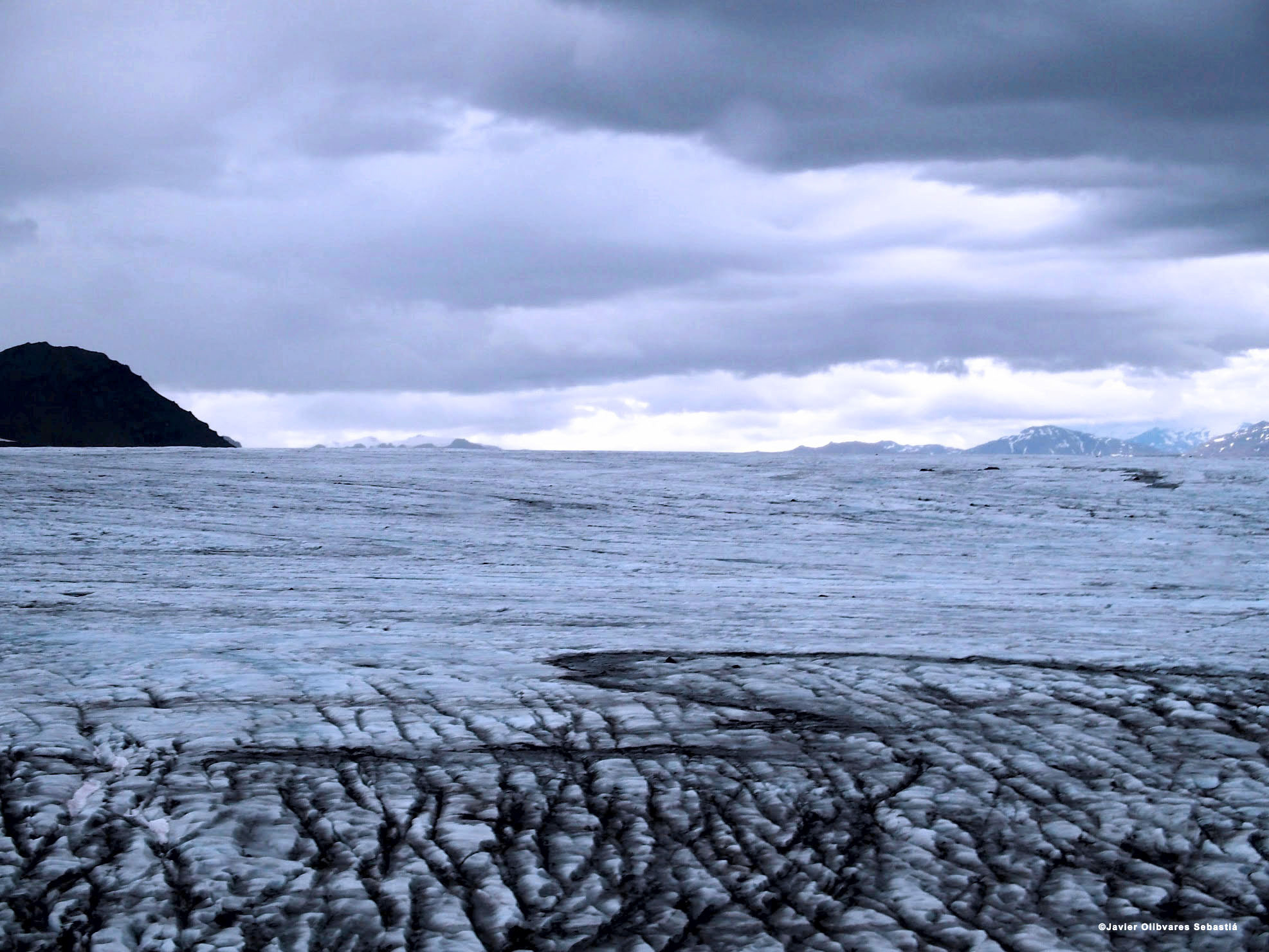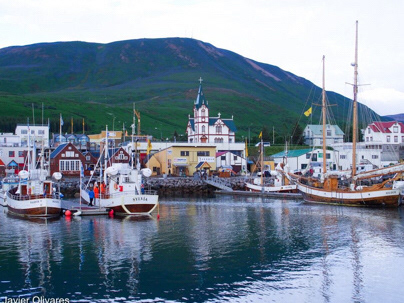City of Arts and Sciences-Ciudad de las Artes y las Ciencias
City of Arts and Sciences, Valencia- Hemisferic.
A futuristic look at the entertainment and education complex of the city of Valencia, which combines the Palace of Music (and the Opera), the Hemisphere, a planetarium and also an IMAX cinema, thirdly the Science Museum, modernity at knowledge service
and fourth place the Oceanographic, the largest Aquarius in Europe.
and fourth place the Oceanographic, the largest Aquarius in Europe.
Hemispheric (in Spanish, El Hemisférico) - Hemisferic.
the first building open to the public of the City of Arts and Sciences of Valencia on April 10, 1998. It is a building designed by Santiago Calatrava with an analogy of an eye, which in its interior houses a large room with a concave screen of 900 m² and 24.4 m in diameter.
Programming offers science and technology topics and changes periodically. It has an approximate area of 143,000 m² and houses two projection systems on its
Programming offers science and technology topics and changes periodically. It has an approximate area of 143,000 m² and houses two projection systems on its
concave screen: Cinema in large format, IMAX Dome.
Digital projections, with astronomical representations and entertainment shows.
Opened in 1998, the Hemisfèric was the first building of the City of Arts and Sciences that opened its doors to the public. It is a spectacular building designed by Santiago Calatrava, which has an ovoid roof of more than 100 meters in length, which houses inside the large sphere that constitutes the projection room.
Digital projections, with astronomical representations and entertainment shows.
Opened in 1998, the Hemisfèric was the first building of the City of Arts and Sciences that opened its doors to the public. It is a spectacular building designed by Santiago Calatrava, which has an ovoid roof of more than 100 meters in length, which houses inside the large sphere that constitutes the projection room.
City of Arts and Sciences-Ciudad de las Artes y las Ciencias
City of Arts and Sciences-Ciudad de las Artes y las Ciencias
With the slogan "Forbidden not to touch" this museum you can imagine what kind of space is, right?The Science Museum offers several interactive exhibitions on science and technology. You can enter without entrance to the ground floor, where there is usually a temporary exhibition, some shops, bathrooms and a restaurant. For the rest of the exhibitions, you will need your ticket. The Museum also offers scientific workshops for all audiences for which you have to buy a separate ticket.
City of Arts and Sciences- Ciudad de las Artes y las Ciencias
City of Arts and Sciences- Ciudad de las Artes y las Ciencias
City of Arts and Sciences-Ciudad de las Artes y las Ciencias
Art and science are two seemingly remote forms of knowledge, largely a consequence of professional specialization and compartmentalized education.
The stereotype of the two cultures, the sciences and the humanities, arose from the study of this imposing separation, to refer to that knowledge gap.
The reality is that science and art are connected and that no form of knowledge is impervious to another.
To give some examples: How could a plastic work be created without the techniques propitiated by science? How could we interpret the choice of materials?
The stereotype of the two cultures, the sciences and the humanities, arose from the study of this imposing separation, to refer to that knowledge gap.
The reality is that science and art are connected and that no form of knowledge is impervious to another.
To give some examples: How could a plastic work be created without the techniques propitiated by science? How could we interpret the choice of materials?
City of Arts and Sciences- Ciudad de las Artes y las Ciencias
The City of Arts and Sciences (in Valencian and officially Ciutat de les Arts i les Ciències) is an architectural, cultural and entertainment complex of the city of Valencia (Spain).
The complex was designed by Santiago Calatrava and Félix Candela, together with the engineers who designed the structural design of the roofs of the L'Oceanografic (the largest aquarium in Europe) Alberto Domingo and Carlos Lázaro.
It was inaugurated on June 9, 1998 with the opening of El Hemisférico. The last major component of the City is the Agora, located between the bridge of l'Assut de l'Or and l'Oceanogràfic.
The City of Arts and Sciences is located at the end of the old Turia riverbed (Jardín del Turia), a channel that became a garden in the 1980s, after the diversion of the river through the great flood of Valencia in 1957. In 2007, was one of the winners of the 12 Treasures of Spain contest.
The complex was designed by Santiago Calatrava and Félix Candela, together with the engineers who designed the structural design of the roofs of the L'Oceanografic (the largest aquarium in Europe) Alberto Domingo and Carlos Lázaro.
It was inaugurated on June 9, 1998 with the opening of El Hemisférico. The last major component of the City is the Agora, located between the bridge of l'Assut de l'Or and l'Oceanogràfic.
The City of Arts and Sciences is located at the end of the old Turia riverbed (Jardín del Turia), a channel that became a garden in the 1980s, after the diversion of the river through the great flood of Valencia in 1957. In 2007, was one of the winners of the 12 Treasures of Spain contest.
Queen Sofia Palace of the Arts-Palacio de las Artes Reina Sofía.
The Palau de les Arts Reina Sofía is the opera house of Valencia (Spain), and home of the Orchestra of the Valencian Community. It is the work of Santiago Calatrava and is part of the architectural complex of the City of Arts and Sciences.
Queen Sofia Palace of the Arts-Palacio de las Artes Reina Sofía.
It was inaugurated on October 8, 2005.
The first opera was performed on October 25, 2006, being chosen for the occasion Fidelio, by Beethoven. From its beginnings to 2015, it was its mayor Helga Schmidt who hired Lorin Maazel as musical director, who in turn had the task of forming a new stable orchestra for the theater, the Valencian Community Orchestra.
Front-line voices and level batons like Zubin Mehta's have passed through his stage, who until 2014 directed the Mediterranean Festival, a mini opera season where, among other operas, the tetralogy of The Gold of the Rhine was represented de Wagner, the first Spanish production of this work.
Also the tenor Plácido Domingo was involved in the project as director of the Improvement Center that bears his name and is responsible for forming new voices.
Also the tenor Plácido Domingo was involved in the project as director of the Improvement Center that bears his name and is responsible for forming new voices.
Queen Sofia Palace of the Arts-Palacio de las Artes Reina Sofía.
City of Arts and Sciences- Ciudad de las Artes y las Ciencias
Queen Sofia Palace of the Arts-Palacio de las Artes Reina Sofía.
City of Arts and Sciences- Ciudad de las Artes y las Ciencias










